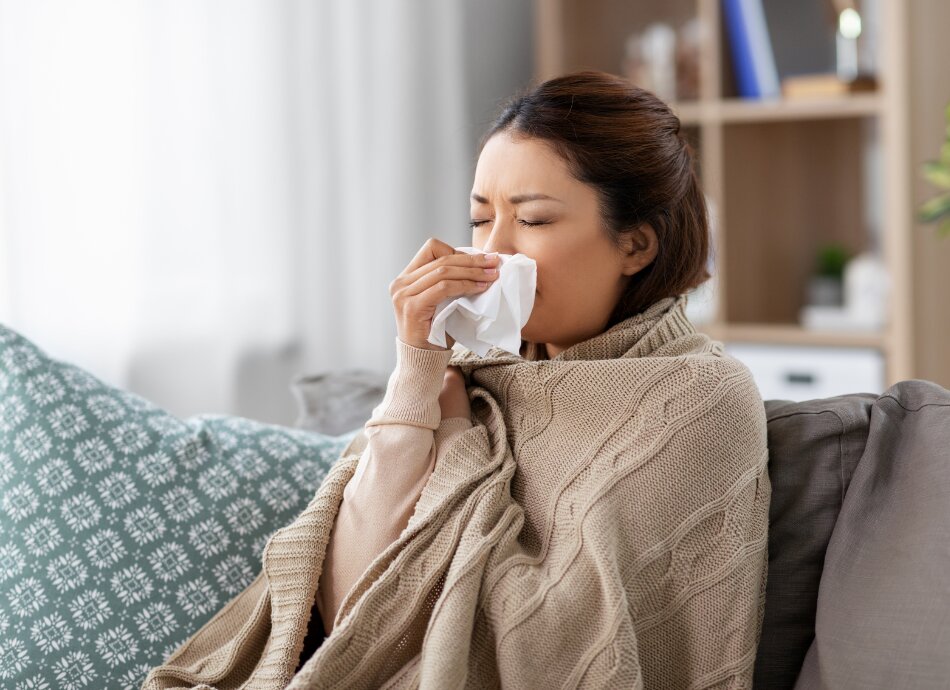Wishing everyone happy holidays and a joyful New Year from the Healthify team. Don't forget to Slip, Slop, Slap and Wrap!
Diabetes – type 1 sick day plan
Key points about making a sick day plan with type 1 diabetes
- If you have type 1 diabetes (mate huka momo tuatahi), it's important to have a sick day plan for managing your blood glucose levels when you are unwell with the flu or other infections such as gastro, urinary tract infections, skin infections or chest infections.
- Work with your diabetes team to create a sick day plan.

When you have type 1 diabetes and are sick, you're at risk of high blood glucose levels and raised ketones. This can lead to diabetic ketoacidosis (DKA), which can be life-threatening. Knowing what to do in advance may help you recover faster.
|
Seek medical help immediately if you have any of the following: |
|
Work with your diabetes team to create a sick day plan. Here is some general guidance.
Always let someone know you are not well
Let a friend, family/whānau member or work colleague know that you are unwell. Keep your plan in a convenient place and include contact information in case you need to reach a doctor at night or on the weekends.
Check your blood glucose levels more often
Check your blood glucose levels every 2 hours, including overnight, until they are back in your target range. Your blood glucose levels will help work out any insulin adjustments you may need. If you are using continuous glucose monitoring (CGM), it’s important to double-check your CGM levels with finger prick tests. Remember there is a lag time between a finger prick test and CGM glucose levels.
Check for ketones
An increase in ketones puts you at risk of diabetic ketoacidosis, which can become life-threatening very quickly. The best way to check for ketones is to use a blood ketone meter. You can get a blood ketone meter and 2 boxes of ketone testing strips on prescription from your doctor. You can also test for ketones in your pee, but this is not as accurate because it reflects your ketone levels a few hours ago rather than right now.
Check for ketones every 1–2 hours until your reading is below 0.6mmol/L.
Adjust your insulin dose
Your body usually needs extra insulin when you are sick, even when you are not eating much, or if you are vomiting (being sick) or have diarrhoea (runny poos). Always take your usual doses of insulin, and then check your blood glucose and ketone levels to decide whether you need to take extra insulin.
Extra insulin taken for sick days is rapid-acting or short-acting insulin, which you will need to take in addition to your usual dose. Your sick day action plan can help you work out if you need to take extra insulin, as well as how much. Contact your diabetes healthcare provider for advice on changing your insulin dose.
Keep drinking and (if possible) eating
It’s very important to keep up your fluid and carbohydrate intake when you are feeling unwell so you avoid dehydration and low blood glucose levels (hypoglycaemia or hypo).
- Try to eat, but if you can’t eat normally, have some easy-to-manage carbohydrate drinks, snacks or small meals. This can include dry toast, plain rice, dry biscuits or crackers, mashed potato, plain ice cream or custard.
- Try to have a cup of fluid (250 mL) every hour.
- If your blood glucose level is less than 12 mmol/L and you can’t eat, drink 1 cup of fluid that contains carbohydrate every hour. This could be cordial or soft drink, juice, sports drinks, weak tea with sugar/honey, jelly or sweet ice blocks.
- If your blood glucose level is higher than 12 mmol/L, drink 1 cup of fluid that doesn’t contain carbohydrate every hour, such as water or sugar-free fizzy drinks.
- If you are vomiting (being sick) or have diarrhoea (runny poos), you can replace fluids and salts with rehydration solutions such as Gastrolyte. Read more about oral rehydration solutions.
Seek medical help
Seek medical advice to treat the underlying illness. Contact your doctor early to avoid becoming more unwell and needing emergency care. You may need to contact your diabetes healthcare provider for advice about adjusting your insulin dose during periods of illness.
Here are some suggested items to have in your sick day management kit:
- a copy of your sick day plan
- long-life fruit juice or non-diet fizzy drink
- 2 x 2 litre bottles of still water
- ice cream
- unopened box of glucose monitoring strips (check expiry date)
- unopened box of ketone monitoring strips (check expiry date)
- rapid or short-acting insulin.
Apps
Resources
Managing sick days for type 1 diabetes(external link)(external link) National Diabetes Services Scheme, Australia
References
- Sick day advice for adults with type 1 diabetes(external link)(external link) Wairarapa, Hutt Valley and Capital & Coast DHBs, NZ, 2017
- Diabetes and sick days(external link)(external link) Australian Diabetes Educators Association, 2006
See our pages Diabetes for healthcare providers and Long-term conditions for healthcare providers.
Apps
Credits: Healthify editorial team. Healthify is brought to you by Health Navigator Charitable Trust.
Reviewed by: Dr Arna Letica, FRNZCGP, Auckland
Last reviewed:
Page last updated:





